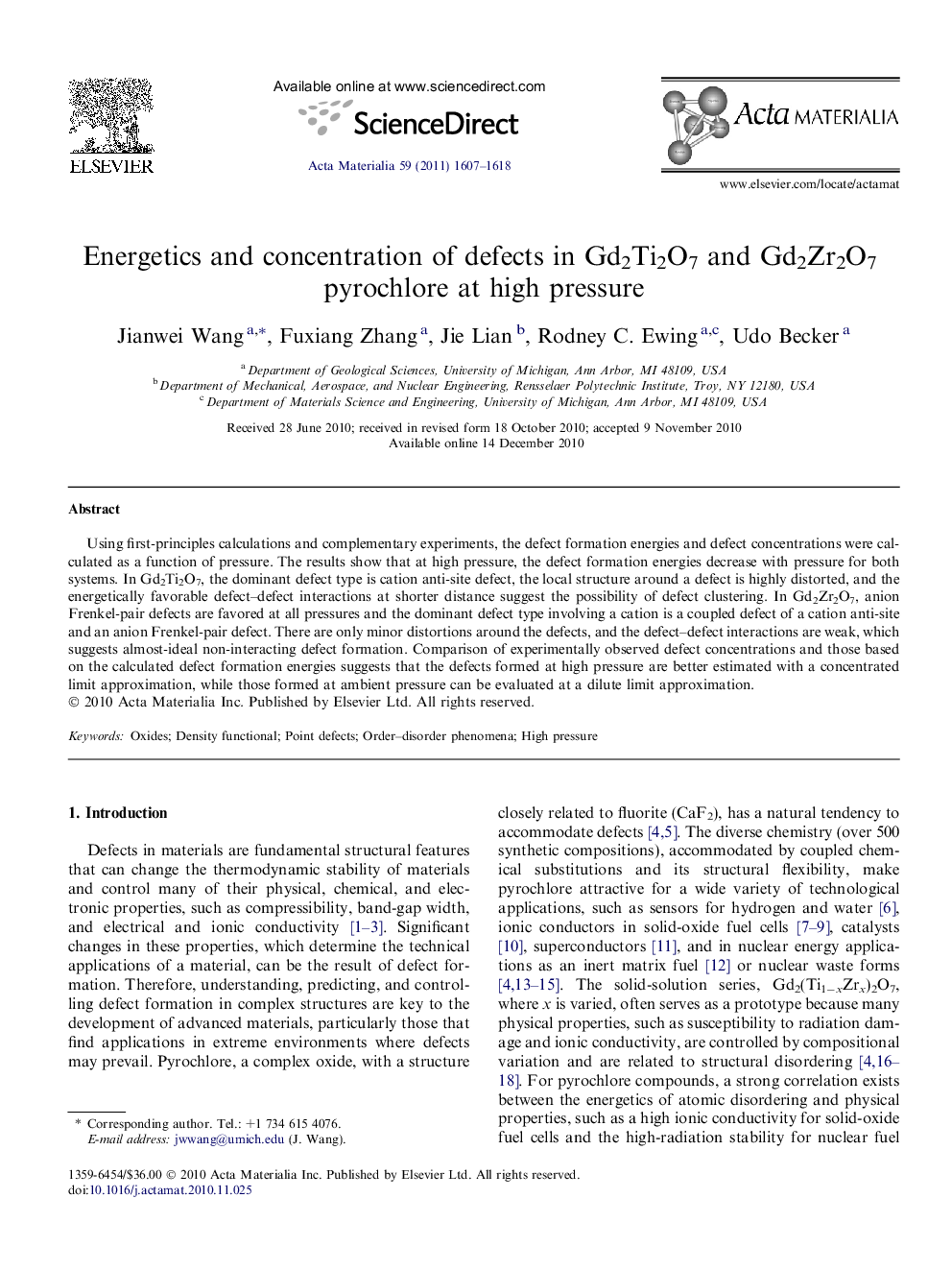| Article ID | Journal | Published Year | Pages | File Type |
|---|---|---|---|---|
| 10620615 | Acta Materialia | 2011 | 12 Pages |
Abstract
Using first-principles calculations and complementary experiments, the defect formation energies and defect concentrations were calculated as a function of pressure. The results show that at high pressure, the defect formation energies decrease with pressure for both systems. In Gd2Ti2O7, the dominant defect type is cation anti-site defect, the local structure around a defect is highly distorted, and the energetically favorable defect-defect interactions at shorter distance suggest the possibility of defect clustering. In Gd2Zr2O7, anion Frenkel-pair defects are favored at all pressures and the dominant defect type involving a cation is a coupled defect of a cation anti-site and an anion Frenkel-pair defect. There are only minor distortions around the defects, and the defect-defect interactions are weak, which suggests almost-ideal non-interacting defect formation. Comparison of experimentally observed defect concentrations and those based on the calculated defect formation energies suggests that the defects formed at high pressure are better estimated with a concentrated limit approximation, while those formed at ambient pressure can be evaluated at a dilute limit approximation.
Related Topics
Physical Sciences and Engineering
Materials Science
Ceramics and Composites
Authors
Jianwei Wang, Fuxiang Zhang, Jie Lian, Rodney C. Ewing, Udo Becker,
